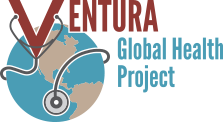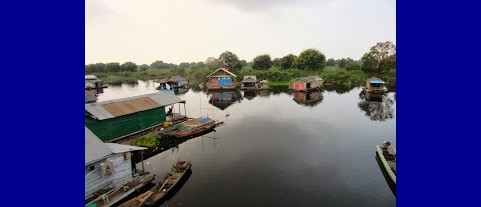The Lake Clinic was started in 2008 by Jon Morgan, an American nurse with an MPH who had been the director of the Angkor Hospital for Children in Siem Reap, Cambodia for many years. The goal of The Lake Clinic is to provide healthcare to rural communities on the Tonle Sap lake. This is one of the largest lakes in SE Asia and provides one third of the protein for the people of Cambodia in the form of fish. More than 1.5 million people live on or around the lake, some in unique floating villages that drift with the rise and fall of the waters. For the past six years, TLC has been taking medical teams by boat to eight of these villages to provide healthcare. The full-time Cambodian team consists of a doctor, dentist, midwife, registrar, cook, boat driver and clinic coordinator. Volunteer doctors are extra. They spend three days on the lake running a walk-in clinic and try to visit each village about once a month. I had the privilege of going on two trips to the lake as well as one trip to the Stung Sen river where TLC has a second team that goes every week to a remote village. Clinic starts Monday morning just before dawn when the whole team meets at the office in Siem Reap and piles into a van with all of our gear. We drive out to the lake and then take a boat to the village. The trip takes about 4 hours, a difficult and cost-prohibitive journey for most locals. Once at the clinic (a 20×20 room built by TLC with a bathroom out back), we have lunch and then unpack. There are boxes of charts, carefully filed with histories going back more than 5 years. The dentist sets up her equipment. We lay out the pharmacy and hang curtains to create “rooms” to see patients. Clinic runs for a half day on Monday, then a full day Tuesday and another half day on Wednesday before we head back to town. We can see as few as 30 patients in a day or as many as 200 depending on the size and needs of the village. The staff have been coming here for six years and know the patients well. There are a lot of musculoskeletal complaints as the people spend all day hunched over fishing nets in tiny boats. I saw the usual colds as well as diarrhea, likely related to poor water quality. TLC has worked hard to educate people about water safety and has even set up water filters in some villages, but it’s difficult to get people to use them and change age-old habits. Most...
VCMC Resident provides care at Pediatric HIV clinic in Malawai with aid of VGHP And FMed travel grant
Pediatric HIV Elective in Malawi After missed flights, lost bags, and 3 days of travel I arrived in Lilongwe, the capital of Malawi, on a sunny morning during the rainy season. The Baylor International Pediatric AIDS Initiative has a Clinical Center of Excellence in Lilongwe, an impressive pediatric HIV clinic staffed by Malawian clinical officers, nurses, social workers, pharmacists, research staff and a few American pediatricians. The clinic is adjacent to the massive government hospital, Kamuzu Central Hospital, which includes a pediatric emergency zone, high dependency unit, malnutrition ward, nursery, NICU, oncology ward, peds surgery ward, and several general peds wards. During my month in Malawi, I worked in HIV clinic, Kaposi’s sarcoma clinic, HIV Teen Club, cervical cancer screening clinic, inpatient peds wards, and in a rural northern region of the country on a community outreach and mentoring trip. My first day was spent in Kaposi’s sarcoma clinic where we saw children with oral KS, severe lymphedema, GI involvement, and HIV-negative KS. If children are fortunate enough to have access to the central government hospital in the capital, they are able to get chemotherapy for KS, and many do quite well. During my second week, I flew up north to Mzuzu with the mentorship team that works in rural health clinics to help strengthen pediatric HIV care. Some of the challenges addressed included HIV positive children lost to follow up, ARV stock outs, insufficient clinical staff, and dosing of pediatric ARV regimens. At the local district hospital, we rounded in the ICU and used my VCMC ultrasound education (thank you Dr. Rutherford, Dr. David) to demonstrate evaluation of intravascular volume. This was particularly useful for our CHF patient who appeared to be in acute renal failure while the hospital had no serum chemistry available due to reagent stock outs and insufficient funds to purchase more. Back in Lilongwe during my third week, I worked alongside Malawian clinical officers in HIV clinic, learning the first-line and second-line ARV regimens, (there are no third-line options), malnutrition treatment guidelines, TB prophylaxis, and malaria prophylaxis for HIV positive kids. During my week on the inpatient peds team, we had many interesting cases including a girl with cryptococcal meningitis, on fluconazole and ampho-B, who underwent frequent therapeutic lumbar punctures to relieve her headache and vomiting – all without local anesthesia since it is a fairly limited resource. We started a cachectic 20 year old HIV positive woman with a BMI of 12 on TB treatment. She had chosen not to take her ARVs for the preceding 12 months because she had moved to live with her cousins and did not want them to know she was HIV positive. We saw numerous cases of...


